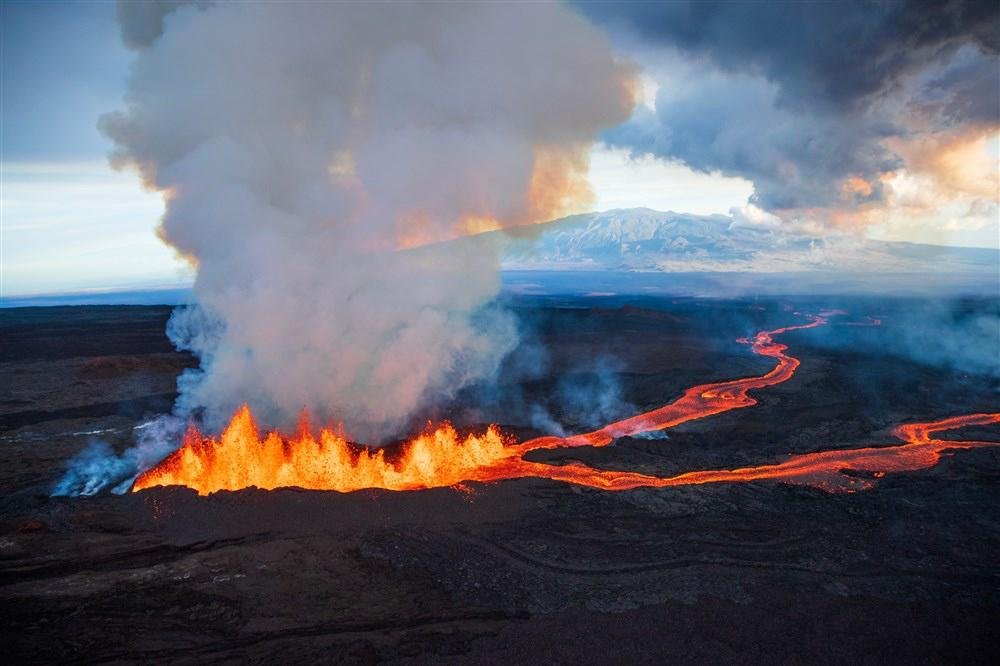
Dec. 2 (UPI) — Lava flow from the Hawaiian volcano Mauna Loa slowed Thursday after reaching flat terrain but officials said they were still concerned about the lava crossing the busy Daniel K. Inouye Highway.
The road, also known as Saddle Road, connects Hilo and Kona on Hawaii, better known as the Big Island. Hilo is the third most populous city on the Hawaiian Islands, next to Honolulu and East Honolulu.
“Advance of the largest flow slowed over the past 24 hours to a rate of about 0.025 miles per hour,” the U.S. Geological Survey said in an update Thursday. “As of 1:00 p.m. HST today, the flow front is about 3.2 miles from the Daniel K. Inouye Highway.
“Advance rates may be highly variable over the coming days and weeks due to the way lava is emplaced on flat ground.”
Scientists said the lava flow had slowed to 30 yards per hour as of Thursday.
“It’s right at the divide where it possibly could go to the Hilo side or the Kona side,” Ken Hon, scientist-in-charge at Hawaiian Volcano Observatory, said. “Not that it will reach either one of those places, but we don’t know if it’s going to go east or west in the saddle.”
Hawaii experienced a rarity on Wednesday when Mauna Loa and the neighboring Kilauea volcano erupted at the same time. It was the first time that happened since 1984. Mauna Loa erupted for the first time in 38 years on Sunday while Kilauea was already active.
“A volcanic eruption is a physical manifestation of so many natural and spiritual forces for Hawaiians,” said Ilihia Gionson, a Hawaii Tourism Authority spokesperson who is Native Hawaiian.
“People who are unfamiliar with that should understand that it’s a very personal, very significant thing.”